
Current Radiology Reports
Scope & Guideline
Empowering professionals with cutting-edge radiology insights.
Introduction
Aims and Scopes
- Multimodality Imaging Techniques:
The journal focuses on the use of various imaging modalities, such as CT, MRI, ultrasound, and PET, to provide comprehensive evaluations of medical conditions, facilitating improved diagnostic pathways. - Innovative Imaging Approaches:
Current Radiology Reports emphasizes the development and application of advanced imaging techniques, including machine learning and 4DCT, to enhance the precision and efficacy of radiological assessments. - Clinical Relevance and Applications:
The journal places significant importance on the clinical implications of imaging findings, aiming to bridge the gap between diagnostic imaging and patient management, thereby supporting clinicians in making informed decisions. - Emerging Trends in Radiology:
The journal is dedicated to exploring and reporting on emerging themes in radiology, such as the role of molecular imaging and advanced protocols in specific diseases, reflecting the evolving landscape of the field. - Educational Contributions:
Current Radiology Reports also serves as an educational resource, providing insights into best practices, case reviews, and guidelines that enhance the training and knowledge of radiologists and healthcare professionals.
Trending and Emerging
- Machine Learning and AI in Imaging:
The integration of machine learning and artificial intelligence into imaging practices is a rapidly growing theme, reflecting a shift towards data-driven approaches that enhance diagnostic accuracy and optimize workflows. - Breast Imaging Innovations:
There is a significant increase in research focused on breast imaging techniques, including advanced MRI and ultrasound applications, as well as interventions like cryoablation, highlighting the ongoing evolution in breast cancer diagnostics and management. - Neurovascular Imaging Advances:
Recent publications emphasize advancements in imaging techniques for neurovascular emergencies, showcasing the importance of timely and accurate diagnosis in critical care settings. - Multimodality Approaches for Oncology:
An emerging focus on multimodality imaging strategies for cancer detection and management is evident, addressing the complexity of oncological conditions and the need for comprehensive diagnostic evaluations. - Patient-Centric Imaging Research:
There is a growing trend towards research that emphasizes patient outcomes and the clinical relevance of imaging findings, aligning with broader healthcare goals of improving patient care and management.
Declining or Waning
- Traditional Imaging Techniques:
There has been a noticeable decrease in publications focusing solely on traditional imaging methods, such as standard X-rays, as newer modalities and advanced imaging techniques gain prominence. - Basic Radiological Protocols:
Research papers that merely describe standard protocols without incorporating novel techniques or clinical applications are becoming less common, as the journal shifts towards more innovative and impactful content. - Generalized Case Reports:
The journal has moved away from publishing generalized case reports in favor of more specific and detailed studies that provide in-depth analysis and insights into complex cases. - Single-Modality Focus:
There is a declining emphasis on studies that evaluate single imaging modalities in isolation, with a growing preference for multimodality approaches that provide comprehensive assessments. - Historical Perspectives:
Research exploring historical techniques or outdated practices is less frequently published, reflecting the journal's focus on current advancements and their clinical applications.
Similar Journals
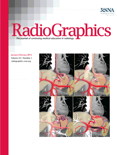
RADIOGRAPHICS
Leading the Way in Radiographic DiscoveriesRADIOGRAPHICS, published by the Radiological Society of North America (RSNA), is a premier academic journal dedicated to the field of radiology, nuclear medicine, and imaging. With an impressive impact factor and recognition in the top quartile (Q1) of both Medicine (miscellaneous) and Radiology, Nuclear Medicine and Imaging categories, RADIOGRAPHICS stands out as a leading platform for disseminating high-quality research and clinical findings. Since its inception in 1985 and projected to run until 2024, the journal has consistently provided essential insights into cutting-edge imaging techniques and advancements in radiological practices, making it invaluable for professionals, researchers, and students alike. Although it does not offer open access, the journal continues to flourish with a robust reputation, ranked 35th in its field according to Scopus, placing it within the 89th percentile of its category. With an unwavering commitment to enhancing the understanding and application of radiological sciences, RADIOGRAPHICS remains a pivotal resource for advancing knowledge and expertise within the medical community.

EUROPEAN RADIOLOGY
Catalyzing Breakthroughs in Imaging TechnologiesEUROPEAN RADIOLOGY, published by SPRINGER, stands as a prestigious international journal in the field of radiology, nuclear medicine, and imaging, with an impressive impact factor that underscores its significance among peers. With an ISSN of 0938-7994 and an E-ISSN of 1432-1084, this journal provides a platform for cutting-edge research and advancements in medical imaging from 1991 to 2024. Recognized as a Q1 journal in both general Medicine and the specialized Radiology category by 2023, EUROPEAN RADIOLOGY ranks an impressive #17 out of 333 in its field according to Scopus, placing it in the 95th percentile. While it does not currently offer Open Access options, the journal remains essential reading for researchers, professionals, and students striving to stay at the forefront of developments in diagnostic imaging and related technologies. By contributing to a comprehensive understanding of radiological practices, EUROPEAN RADIOLOGY plays a crucial role in shaping the future of medical diagnosis and patient care.
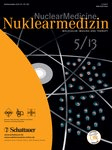
NUKLEARMEDIZIN-NUCLEAR MEDICINE
Illuminating Innovations in Radiology and Imaging.NUKLEARMEDIZIN-NUCLEAR MEDICINE is a prestigious journal published by Georg Thieme Verlag KG, focusing on pivotal advancements in the fields of Nuclear Medicine, Radiology, and Imaging. Established in 1959, this journal has served as a critical platform for disseminating innovative research, reviews, and clinical guidelines until its anticipated convergence in 2024. With an ISSN of 0029-5566 and an E-ISSN of 2567-6407, NUKLEARMEDIZIN is acknowledged in the academic community as a Q3 category journal within Medicine (miscellaneous) and Radiology, Nuclear Medicine, and Imaging as of 2023, highlighting its ongoing contribution to the interdisciplinary dialogue in healthcare. Although the journal does not currently offer open access, it remains accessible to professionals and students through various academic databases, ensuring that cutting-edge knowledge in this growing field is shared widely. Researchers interested in the latest methods and technologies in Nuclear Medicine will find NUKLEARMEDIZIN a valuable resource for enhancing their work and understanding the complexities of modern imaging modalities.
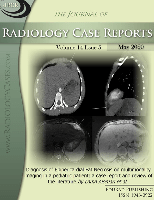
Journal of Radiology Case Reports
Fostering Collaborative Knowledge in Diagnostic ImagingThe Journal of Radiology Case Reports is a pioneering open-access journal dedicated to the publication of original case reports in the field of radiology, providing a crucial platform for the dissemination of valuable clinical insights and advancements in diagnostic imaging. Published by EDURAD since 2008, this journal aims to bridge the gap between clinical practice and ongoing research by showcasing unique cases that can enhance diagnostic accuracy and patient care. With an ISSN of 1943-0922, the journal is committed to excellence, evidenced by its current ranking in the Scopus database, where it stands at position #253 among 333 titles in the field, corresponding to a 24th percentile. The journal is indexed in notable databases and features an HIndex reflective of its ongoing contribution to medical literature. Researchers, professionals, and students can access insightful articles covering diverse case scenarios, thus enriching their knowledge of medical laboratory technology and enhancing their expertise in radiology, nuclear medicine, and imaging. The journal not only provides a wide reach through its open access model but also encourages collaborative research efforts, fostering the rapid circulation of case-based knowledge essential to the evolving landscape of radiological science.
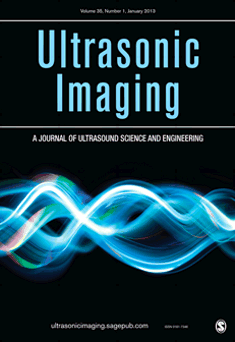
ULTRASONIC IMAGING
Shaping the Landscape of Medical Imaging with UltrasoundULTRASONIC IMAGING, published by SAGE PUBLICATIONS INC, is a leading journal within the fields of Radiology, Nuclear Medicine, and Imaging, with a particular focus on advancing the science and application of ultrasound technology. Since its inception in 1979, the journal has provided a platform for high-quality research, featuring innovative studies that bridge theoretical advancements and practical applications, making it an essential resource for researchers and professionals. With a notable impact factor reflecting its robust contribution to the medical community (2023: Q2 rankings in both Radiological and Ultrasound Technology and Radiology, Nuclear Medicine, and Imaging), ULTRASONIC IMAGING serves to disseminate pivotal developments in diagnostic imaging techniques, enhancing the understanding of ultrasound's role in patient care. Researchers are encouraged to explore this journal's collection of cutting-edge articles that push the boundaries of knowledge in ultrasound imaging and its implementation in clinical practices.

Iranian Journal of Radiology
Fostering Collaboration in Radiology and Nuclear MedicineWelcome to the Iranian Journal of Radiology, a pivotal platform dedicated to advancing the field of radiology, nuclear medicine, and medical imaging. Published by BRIEFLAND, this journal aims to disseminate high-quality original research, reviews, and clinical studies that contribute substantially to the global scientific community. Established in 2008 and spanning until 2024, the journal provides an essential archive of knowledge in a rapidly evolving discipline. Although it currently holds a Q4 quartile ranking in the 2023 Scopus metrics, it serves as an important resource for both emerging and established researchers looking to submit their work. Located in the Netherlands, the journal is committed to open dialogue and collaboration amongst professionals in the field, reflecting its accessibility and relevance to both practitioners and academics. With its continued growth and commitment to quality, the Iranian Journal of Radiology is poised to enhance understanding and innovation in diagnostic imaging.

Diagnostic and Interventional Imaging
Empowering Healthcare through Advanced Imaging KnowledgeDiagnostic and Interventional Imaging, published by Elsevier Masson, stands as a prominent journal in the fields of Radiology, Nuclear Medicine, and Imaging. With a significant impact factor and a reputation for high-quality research, this journal is dedicated to advancing the understanding and application of diagnostic and interventional imaging techniques. It has achieved an impressive Q1 ranking across multiple categories including Medicine (miscellaneous) and Radiological and Ultrasound Technology, demonstrating its esteemed position within the academic community. The journal features cutting-edge studies and reviews, reflecting the latest innovations and practices from 2012 to 2024. Researchers, healthcare professionals, and students alike can look forward to accessing valuable insights that drive forward the discipline and improve patient outcomes, as evidenced by its robust Scopus rankings placing it among the top journals in its domain.
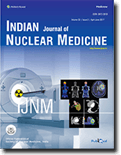
Indian Journal of Nuclear Medicine
Bridging Radiology and Nuclear MedicineIndian Journal of Nuclear Medicine, published by Wolters Kluwer Medknow Publications, serves as a crucial platform for advancing knowledge and research in the field of nuclear medicine, a specialized domain crucial for diagnostic imaging and therapy. With an ISSN of 0972-3919 and an E-ISSN of 0974-0244, this esteemed journal has been a trusted source of information from 2010 to 2024. Situated in Mumbai, India, it caters to researchers and professionals with an interest in the interplay between radiology and innovative nuclear imaging techniques. Although classified as Q4 in Radiology, Nuclear Medicine, and Imaging in 2023, the journal actively contributes to the dialogue surrounding emerging technologies, clinical practices, and challenges in nuclear medicine, making it a significant addition to the academic discourse. While currently not categorized as Open Access, readers can benefit from the wealth of peer-reviewed articles that shape the future of nuclear medicine and its applications. As the impact factor and specific H-index details are not listed, the journal's potential for future growth and increased visibility in the academic community remains promising, positioning it as a commendable resource for students, researchers, and healthcare professionals dedicated to the advancement of medical imaging and therapy.

Imaging
Transforming Perspectives in Medical ImagingImaging, published by AKADEMIAI KIADO ZRT, is an esteemed open-access journal dedicated to the field of medical imaging, established in 2020. With an E-ISSN of 2732-0960 and based in Budapest, Hungary, this journal provides a vital platform for the dissemination of cutting-edge research and advancements in imaging techniques, especially in the realms of radiology, nuclear medicine, and ultrasound technology. While currently positioned in the Q4 category across multiple medical specialties, the journal continues to strive for improvements in visibility and impact, contributing to the evolving discourse in medical imaging. The journal aims to facilitate an inclusive and collaborative environment for researchers, professionals, and students, inviting them to share their findings and insights to enhance the field's development. With open-access availability since its inception, Imaging ensures free and easy access to its content, fostering a greater understanding and appreciation of innovative imaging practices worldwide.

Insights into Imaging
Advancing the Frontiers of Medical ImagingInsights into Imaging is a prominent open-access journal published by SPRINGER WIEN, specializing in the dynamic fields of radiology, nuclear medicine, and imaging, with its ISSN 1869-4101. Established in 2012, the journal has established itself as a leading platform for disseminating high-quality research and innovative findings, currently holding a prestigious Q1 ranking in its category as of 2023. With an impressive Scopus rank of #42 out of 333 in the medicine discipline, the journal is positioned in the 87th percentile, reflecting its significance and influence in the academic community. Based in Germany, Insights into Imaging not only provides unrestricted access to research but also aims to bridge the gap between scientific inquiry and clinical application, making it an essential resource for researchers, professionals, and students engaged in advancing imaging technologies and practices. The journal’s commitment to fostering knowledge exchange ensures that it remains a critical contributor to the evolving landscape of medical imaging, with articles available from 2012 through 2024.